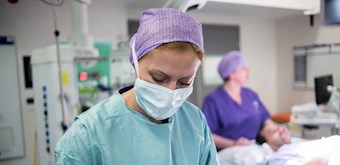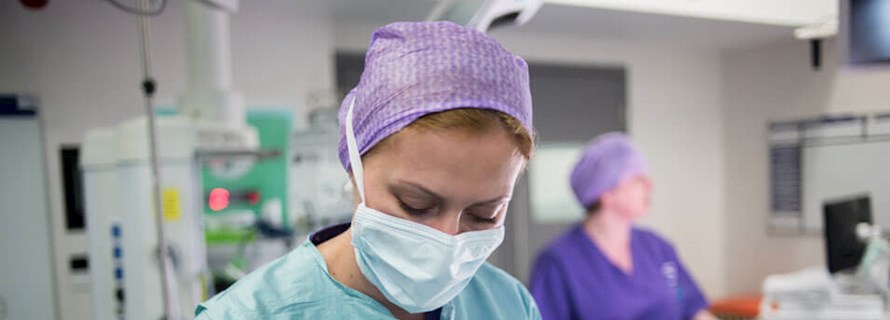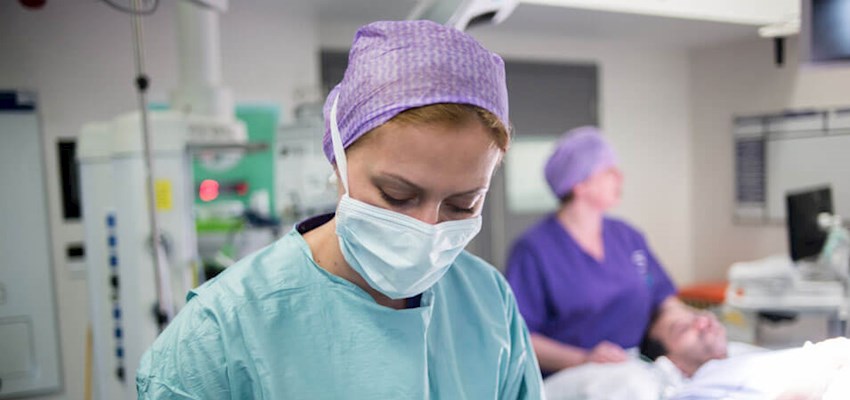Spinal dysraphism
Spinal conditions
HCA UK’s team of experts can diagnose and treat your child if you think that they may have spinal dysraphism.
About
Spinal dysraphism describes any form of spinal condition and occurs early on in a foetus’s development, during the first month of pregnancy. It describes what happens when the backbone, or spinal column, fails to form properly, and affects the spine, spinal cord or nerve roots.
Need to know
-
Symptoms of spinal dysraphism icon plus
Spinal dysraphism does not always present symptoms, and symptoms will depend on the type of condition.
- myelomeningoceleor spina bifida aperta, can cause leg weakness, incontinence, sensory loss and paralysis
- split cord malformation or diastematomyelia, can be indicated by scoliosis, or curved spine
- spinal cord lipoma or lipomyelomeningocele, may include problems with bowel and bladder function, urinary tract infections, back and leg pain, weakness, and sensory loss.
- tethered cord symptoms vary, but often include: leg weakness, sensory loss, low back and leg pain, and bowel or bladder incontinence
- spina bifida occulta rarely causes symptoms
-
Diagnosis icon plus
Some forms of spinal dysraphism are detected in pregnancy by ultrasound, or can be seen in new born babies. Others, such as spina bifida occulta, sometimes cause visible signs such as thickened skin or a patch of hair over the defect.
Other spinal dysraphism conditions which affect, for example, the curvature of the spine, mobility or incontinence, are more likely to be diagnosed in slightly older children.
Diagnostic tests to confirm particular conditions might include MRI scans to produce a more detailed picture of spinal tissue and areas affected. -
Potential treatment options icon plus
Your consultant will discuss the most suitable course of treatment for your child, which is likely to involve surgery for your child’s specific condition.
For example, if your child’s spinal cord is not contained in the spinal column and sticks outside the body, surgery will protect the spinal cord from further damage, remove any problem areas and restore the structure as much as possible.
Surgery for tethered cord involves opening the spinal column via a laminectomy to reveal its location and then working carefully to release the constriction.
Types of spinal dysraphism
Myelomeningocele
Also known as spina bifida aperta, this is when the spinal cord is not contained within the spinal column, but protrudes outside the body.
Spina bifida occulta
This is when one or more vertebrae has a slight defect, but the spinal cord and surrounding membranes are unaffected.
Diastematomyelia
Also called split cord malformation, a spinal cord can be split by a piece of bone or cartilage piercing the spinal cord space.
Lipomyelomeningocele
This is also called spinal cord lipoma, where fat tissue attaches to the spinal cord and surrounding tissue.
Tethered cord
This means that the spinal cord cannot move freely in the spinal column, as it is ‘tied’ at the base.
Dermal sinus tract
This is a channel or dimple in the skin over the spine which may cause spinal cord tethering or abnormal growths in the spinal cord.
Our consultants
We're proud to work with leading experts across a range of medical fields, whose skills are matched by their integrity and compassion.




Our facilities
From complex surgery to straightforward procedures, we provide exceptional care across our network of hospitals, outpatient centres and specialist clinics.
Book an appointment
Our team can help with any enquiries or you can make an appointment with one of our experienced consultants.
Call us today
020 7079 4344
This content is intended for general information only and does not replace the need for personal advice from a qualified health professional.